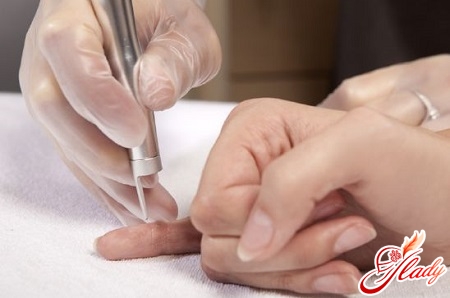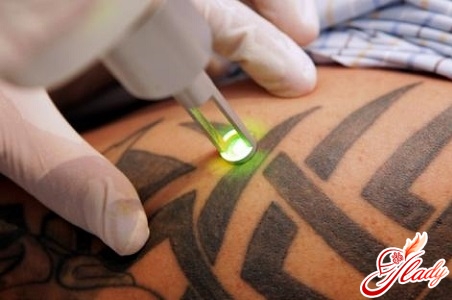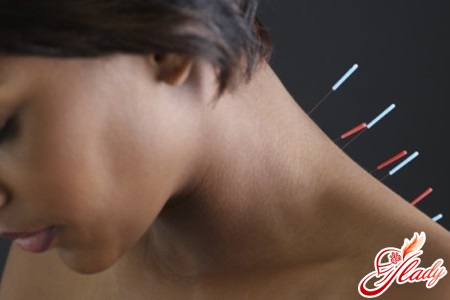 Since ancient times, women have strivedget rid of excess hair on the body, and now this fight continues. With only one difference - modern women are lucky, because in the 21st century there are many more opportunities and ways to remove unwanted hair. This includes depilation - temporary removal that does not destroy the hair follicle. And epilation - hair removal from the root. In this case, the hair follicle is destroyed by chemical exposure or powerful light radiation. Hair growth in some cases stops forever, but in general the procedure gives the desired effect for five to seven years. Everything depends on the chosen procedure, hair stiffness and color. And in order to achieve the best result, you need to combine several types of epilation. Let's consider which types of epilation and depilation are better, more effective and painless.
Since ancient times, women have strivedget rid of excess hair on the body, and now this fight continues. With only one difference - modern women are lucky, because in the 21st century there are many more opportunities and ways to remove unwanted hair. This includes depilation - temporary removal that does not destroy the hair follicle. And epilation - hair removal from the root. In this case, the hair follicle is destroyed by chemical exposure or powerful light radiation. Hair growth in some cases stops forever, but in general the procedure gives the desired effect for five to seven years. Everything depends on the chosen procedure, hair stiffness and color. And in order to achieve the best result, you need to combine several types of epilation. Let's consider which types of epilation and depilation are better, more effective and painless.
Types of depilation
Chemical bleaching This type of depilationused if it is necessary to bleach rare hairs on the face or body. A bleach is applied to the skin and washed off after a while. This can be a small amount of 5-10% hydrogen peroxide with a few drops of ammonia added. The skin is wiped with this solution several times a day. Biodepilation This includes depilation with resin and wax. A very effective procedure, hair growth slows down for several weeks. To carry out the procedure, the hair must grow at least nine millimeters. The main disadvantages: pain and ingrown hairs. This procedure is best carried out in a salon, since its successful implementation requires skill from the master. Sugar depilation (Sugaring) A thick sugar solution is applied to the skin, a cloth is applied and the hairs are “torn off” against the direction of their growth. This type of depilation is better than the procedure using wax, since it does not irritate the skin, and even the shortest hairs are pulled out. The only disadvantage is the pain of the procedure, so it is not done in the bikini area and underarms. Shaving A well-known and fast way to get rid of hair. Cons: the procedure must be carried out quite often, as the hair grows back in one or two days, ingrown hairs, irritation and redness of the skin. Depilatory creams Usually used for the bikini line, as it does not cause pain. Therefore, it is recommended for pregnant women. Cons: creams are effective only on thin and light hairs. Which cream is better is up to you. Here everything will depend on your skin type. Electric hair removal Hair removal with special devices. The procedure is quite painful, and therefore is usually carried out only on the legs. Cons: pain and ingrown hairs under the skin. Which electric epilator to choose? It is better not to save money here and buy a really high-quality thing from a reliable manufacturer.
Types of hair removal
Electrical hair removal Involves the removal ofhair using electric current. A conductor is inserted into the skin to the depth of the hair follicle, through which the current passes, destroying the follicle. This type of epilation uses different currents, it all depends on the area in which the hair needs to be removed. On the face, the current is less, and on the body, more. There are several varieties of this procedure:
- Thermolysis - Effected by high-frequency alternating current and low voltage.
- Electrolysis - exposure to electrochemical galvanic current, which produces hydrochloric acid, which burns out the hair follicle.
- Blend method - combines the first two types of current exposure.
- Flash method - Similar to electrolysis, but it uses a very high frequency current of 2000 kHz.
- Sequential blend - an improved blend method, for better effect of the procedure the amplitude of the direct current is reduced.
- Sequential flash - A more advanced flash method, the same high-frequency current is used, but the pulses are of different durations.
Electrolysis can be called a pioneer inareas of modern hair removal. Disadvantages of the procedure: relative pain, minor microtrauma. Laser hair removal Hair is removed using a special laser. The laser energy instantly heats and destroys cells containing the melanin pigment, i.e. the hair follicles themselves. At the same time, adjacent tissues are practically not damaged. The hole of the removed hair follicle grows over, and the skin becomes smooth. Disadvantage of this method: only dark hair can be removed, since the laser does not recognize light tones. Photoepilation Hair is removed under the influence of light flashes. The principle of action on the hair follicle is the same as in laser hair removal. The main difference is that this type of hair removal can also be performed on light hair. The required number of procedures to achieve a lasting effect is from 3 to 6. But after the first procedures, the hairs become thinner and less noticeable. Ultrasonic hair removal Complete hair removal using a special gel and an ultrasonic device. Before the procedure, the hair is depilated, then a special gel is applied, the molecules of which penetrate deep into the hair follicle using an ultrasonic device and destroy it. Disadvantages of this type: the first positive changes are observed a year after the start of the procedures, and the radiation affects not only the hair follicles, but also the surrounding cells. Also, experts do not recommend using ultrasonic hair removal in the bikini area. Enzyme hair removal A kind of thermotherapy. Hair is removed using special substances - enzymes, which slowly but very accurately destroy the hair follicle. In order for the substance to penetrate the skin, special thermal bandages are applied to the treated area. The procedure is carried out under the influence of infrared light. After such hair removal, you cannot sunbathe for at least a week. On the day of removal, the treated area must be protected from moisture. Disadvantage of this procedure: it cannot be carried out on the face. Combined methods In this procedure, I use two or more types of hair removal, and that is why it is considered better and more effective than all the others. Recently, the most popular method is Elos epilation (which stands for “Electro-Optical Synergy”), which combines the methods of electro and photoepilation.
Contraindications for epilation
- chronic or acute skin diseases;
- if there are neoplasms on the skin;
- diabetes;
- if there is varicose expansion at the site of the procedure;
- hypertension, ischemic heart disease in severe forms;
- infectious diseases, herpes;
- oncological diseases;
- pregnancy.
Before you ask yourself what type of hair removalchoose, remember - any procedure is not a panacea for getting rid of hair, and each decision must be approached consciously, having received advice from a dermatologist and cosmetologist, and in some cases other doctors. We recommend reading:









